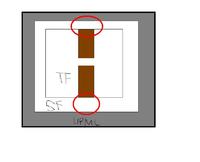c8806z9
Newbie level 4

Problem of Scattering Field/Total Field technique in FDTD
Hi,
I want to calculate transmission problem by using of FDTD. The source is given by TF/SF technique. As we know, the scattering zone would seperate the UPML and structure(Scattering problem).
My question is, is it possible to set scattering region to be "zero" since the structure I simulate which have to "touch" the UPML boundary.
If it is incorrect if I set scattering zone to be zero, how should I do when defining the structure which would touch UPML under the TF/SF source technique? Or how to modify SF/TF technique for my purpose?
Thank you in advance
Hi,
I want to calculate transmission problem by using of FDTD. The source is given by TF/SF technique. As we know, the scattering zone would seperate the UPML and structure(Scattering problem).
My question is, is it possible to set scattering region to be "zero" since the structure I simulate which have to "touch" the UPML boundary.
If it is incorrect if I set scattering zone to be zero, how should I do when defining the structure which would touch UPML under the TF/SF source technique? Or how to modify SF/TF technique for my purpose?
Thank you in advance
Last edited:

